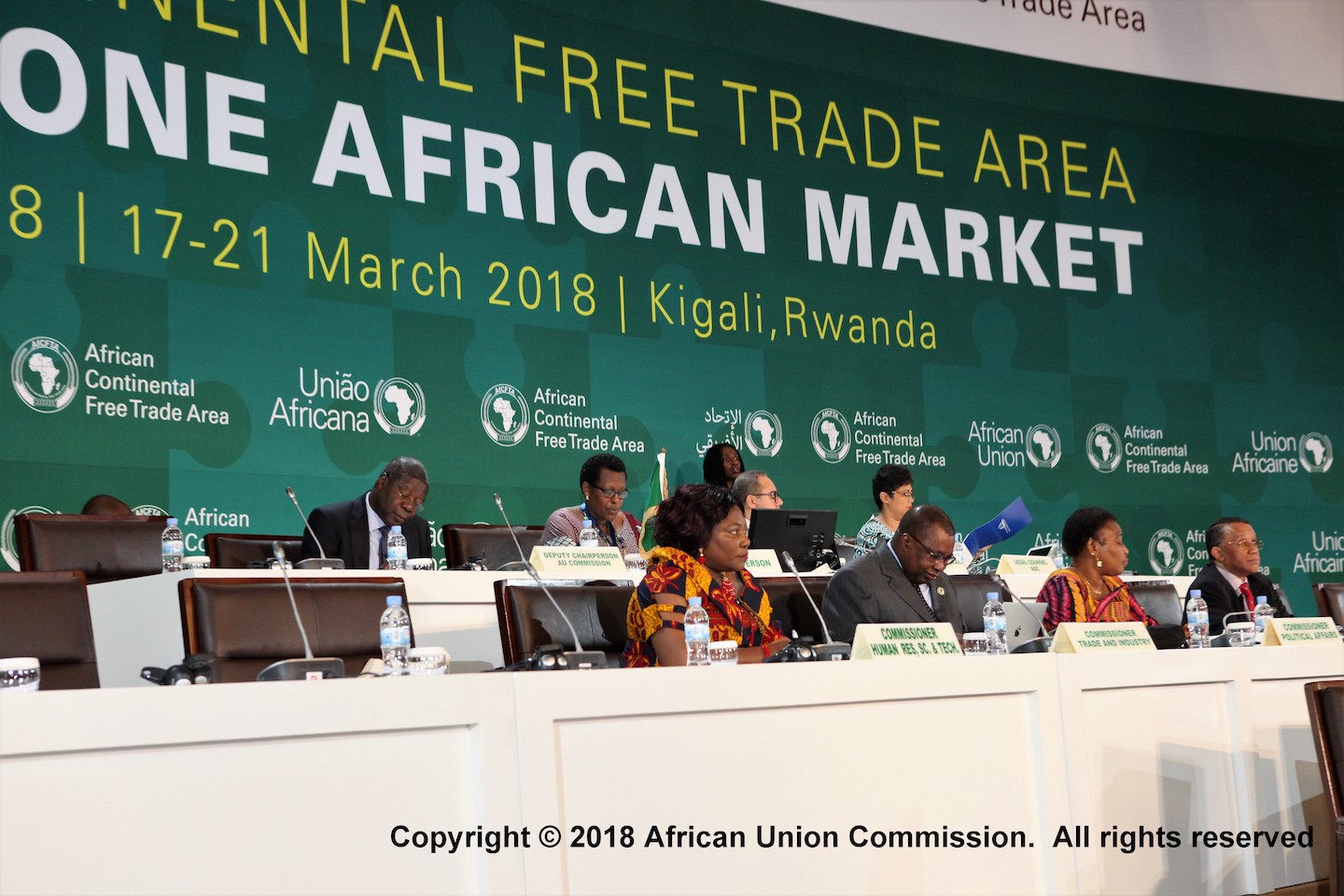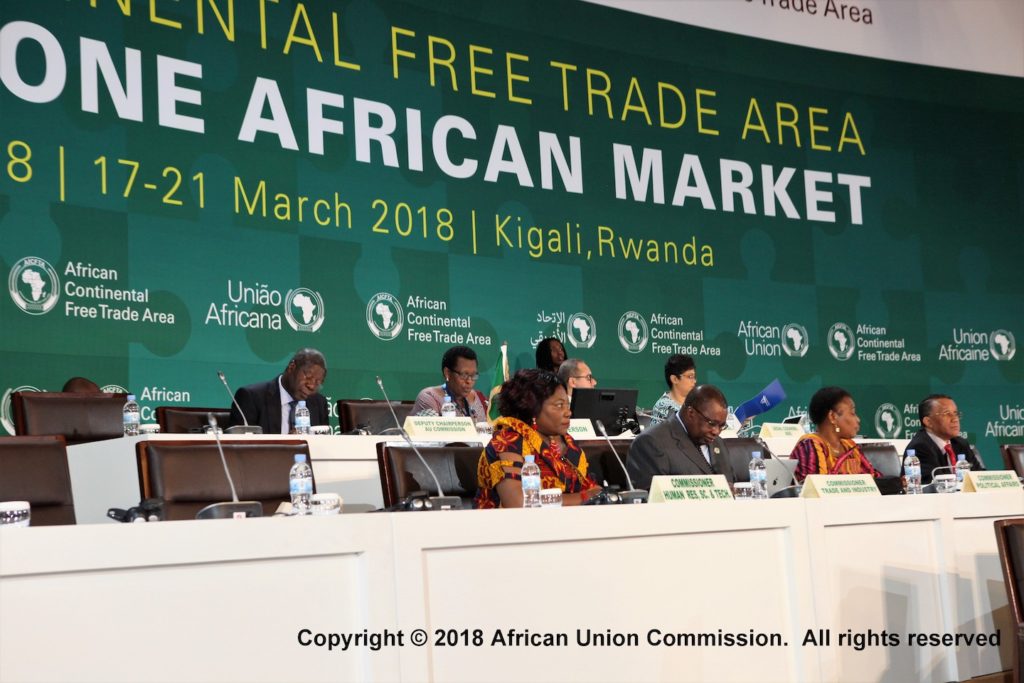AfCFTA: What you need to know

The AfCFTA will cover a market of 1.2 billion people and a gross domestic product (GDP) of $2.5 trillion, across all 55 member States of the African Union.

By T.Roble
AFRICAN HEADS of states and governments will Tuesday append their signatures to the protocol establishing a continental trade area aimed at boosting intra-African trade by 52% through cutting off tariff barriers for imports and exports within the continent.
President Mohamed Farmaajo is expected to attend the event which kicked on Saturday as trade ministers fine-tuned components of the agreement following a two year negotiation by countries in the continent.
African Union Commission chairperson Moussa Faki Mahamat told Trade Ministers gathering in Rwanda’s capital Kigali Monday the African Continental Free Trade Area (AfCFTA) portends immense opportunities for the continent.
“Everything has been said about the African Continental Free Trade Area, its crucial function in African integration, its economic spillover effect, the solidarity, of which it is the symbol against other blocs in a world where competition is fierce, its positive impact on the well-being of our peoples, the expected opening up of immense sources of jobs and the encouraging development prospects it offers to our youths,” said Mahamat.
What does AfCTA mean?
African heads of states and governments agreed in 2015 to establish a continental trade community amid concerns that the continent was holding the tail end of the stick in global trade, a feature characterized by very marginal intra-trade and negligible returns from the continent’s raw materials.
According to the UN Economic Commission for Africa (UNECA), Africa’s intra-trade share is only 16% while the continent’s share in global trade in services stood at 2.2 between 2010. Africa’s manufacturing exports only account for less than 1% of global share, UNECA says.
AfCTA is a trade instrument which seeks to cut initial tariffs for 90% of goods boosting trade among African countries and creating opportunities for regional value chain. The AfCFTA will cover a market of 1.2 billion people and a gross domestic product (GDP) of $2.5 trillion, across all 55 member States of the African Union. It will be the world’s largest free trade area since the formation of the World Trade Organization in terms of the number of countries participating.
The average continental tariffs rate stands 6.1% but with the elimination of these barrier, intra-trade in Africa is expected to grow up to 52.3%.
Somalia’s trade deficit
Somalia experiences a serious deficit in the region barely exporting any products to any African countries. According to records from Kenya’s National Bureau of Statistics, the East African country exported goods worth $150 million to Somalia in 2015 while exports from Somalia to Kenya, ‘were not high enough to be registered in the 2016 Economic Survey’.
Somalia however exports live animals to Gulf countries with 2015 records indicating the country earned $384 million exporting 5.3 live animals in that period.
Intra trade with African countries could mean Somalia can benefit from the regional value chain involve larger industries sourcing their supplies from smaller industries across borders. This would for example mean Somalia can export hides and skins to leather products manufacturing plants in Africa instead of exporting both meat and skins to the Gulf.
The implementation of the agreement is however a long road to travel owing to fears and protectionist tendencies by members states. Nigeria is reported to have requested more time to study the terms of the agreement.
Heads of states and governments will also tomorrow elect the country to host the AfCFTA secretariat which will function as an autonomous body within the African Union.